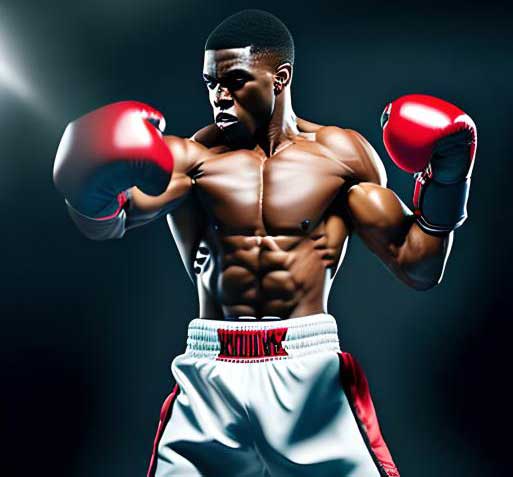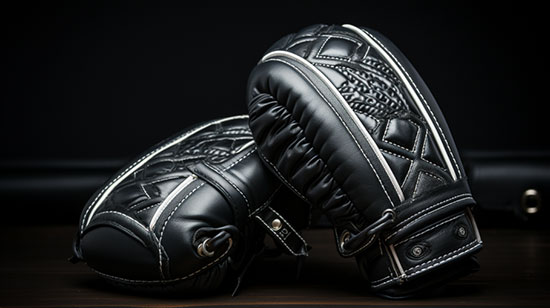Many factors come into play while boxing, and throwing a punch is not as easy as it might seem. With every type of punch, there is a precise movement that must be incorporated for the punch to land successfully.
In most cases, boxing revolves around how well you execute your punch to deliver its impact. It is not about how often you move your shoulder.
Rather, with the right technique, you will have to involve more than shoulders; the knockout power punches begin from your legs, obliques, and lats.
As such, let’s delve into two boxing punches; straight punch vs. jab. How are they executed, and how do they differ? Keep it here.
Contents
Straight Punch
Also known as the cross or reverse punch, a straight punch is an effective punch, often thrown in a one-two jab combo, followed by a straight punch.
It is renowned as the power punch delivered using the dominant rear hand emanating from the guard position.
The name straight punch translates to a strong punch launched and delivered across the opponent’s face.
As the rear hand moves forward to land the punch, the lead hand is pulled back into the guard position to protect the face from counterattacks.
As the punch is being delivered, most of your weight shifts to the front foot, and the knees assume a slightly bent position.
By this, you are able to land the punch and pivot with your back foot as you rotate the hips forward.
After delivering the punch, immediately resume your rear hand guard position, ready to launch more attacks.
Ideally, straight punches are used as knockout punches and as counterattacks to jabs. Even so, they can also be used to initiate an attack.
The straight punches leave little range and hence gathers dramatic power. With the distance, it is easy to counter.
As such, to effectively land the straights, you have to ensure that they are in line with the jabs.
Jab
A jab is a basic straight punch thrown with the lead hand emanating from the guard position. Jabs are fast and straightforward.
Often, their intent is not to land a powerful punch. As such, they are thrown a lot, with the aim of measuring the distance between the boxers.
If you are able to reach your opponent with the jab, then you can deliver a good punch with a short forward movement.
Another reason why you need to use jab punches is to distract your opponent so that you can steal the moment and deliver a significant punch.
After delivering your jab, assuming the ideal boxer stance with your lead hand on guard is important.
Even though a jab is low energy and produces less impact, it is a great resource and basis for developing subsequent combo punches.
Differences
- Straights are delivered using the rear hand, whereas jabs employ the lead hand to land the punches.
- A straight punch is a power punch landed across the opponent’s face. A jab, on the other hand, is a beginner or basic punch used to set up other punches or gauge the distance between the boxers.
- Straights are used as can be used as counterattacks for jabs and as knockout punches. Jabs, on the other hand, are low-energy punches that land moderate punches.
- If your opponent is using jabs, understand that they are quick and leave no room for countering. As such, to land a good straight, you have to ensure it is in line with the jabs.
| Feature | Straight Punch | Jab |
|---|---|---|
| Description | A punch is thrown with the rear hand in a straight line toward the opponent’s centerline | A quick, snapping punch thrown with the lead hand |
| Technique | The body rotates slightly to generate power and the punch is delivered in a straight line with the arm fully extended | The lead arm is quickly extended and retracted, snapping back to the starting position |
| Purpose | Used as a power shot to inflict damage on the opponent | Used as a quick, probing punch to measure distance, set up other punches, and keep the opponent at bay |
| Range | Typically thrown from medium to close range | Can be thrown from long range to maintain distance and disrupt the opponent’s rhythm |
| Power | Generally more powerful than a jab due to the rotation of the body and the use of the rear hand | Less powerful than a straight punch, but still capable of stunning the opponent and setting up other punches |
| Defense | This leaves the puncher more open to counterattacks due to the longer extension of the arm | Quick and easy to retract, making it a safer punch to throw defensively |
| Variations | Includes the cross, which is a straight punch thrown with the rear hand, and the hook, which is a curved punch thrown with the lead or rear hand | Can be thrown as a double jab, where two jabs are thrown in rapid succession, or as a triple jab, where three jabs are thrown in rapid succession |
| Examples | Examples of fighters known for their straight punches include Mike Tyson and Muhammad Ali | Examples of fighters known for their jabs include Floyd Mayweather Jr. and Larry Holmes |
Similarities
While there are many differences between the jab and the straight punch, the two have some unique similarities.
- They both form an integral combination in boxing
- They are safer to execute compared to hooks and uppercuts.
Which performs better according to different situations?
While both straights and the jabs are excellent boxing punches, each punch has its stronghold. A jab is more efficient in setting punch combinations, testing the opponent’s defense, gauging the distance, distracting the opponent, and obscuring the opponent’s target point.
For the straights, they are efficient for knockouts and jab countering. They are also effective as they generate a good impact that will neutralize your opponent’s aggression as they charge back.
Conclusion
Often, a jab is showcased as a weak, useless punch. However, once it is well developed, it can prove to be more useful than other boxing punches.
As such, acquainting yourself with the correct punch technique will ensure your straights and jabs are effectively landed.





